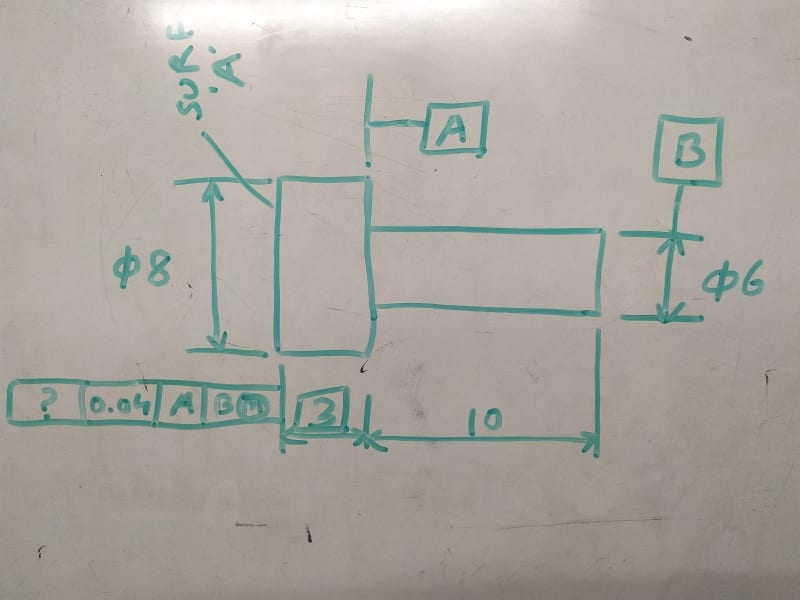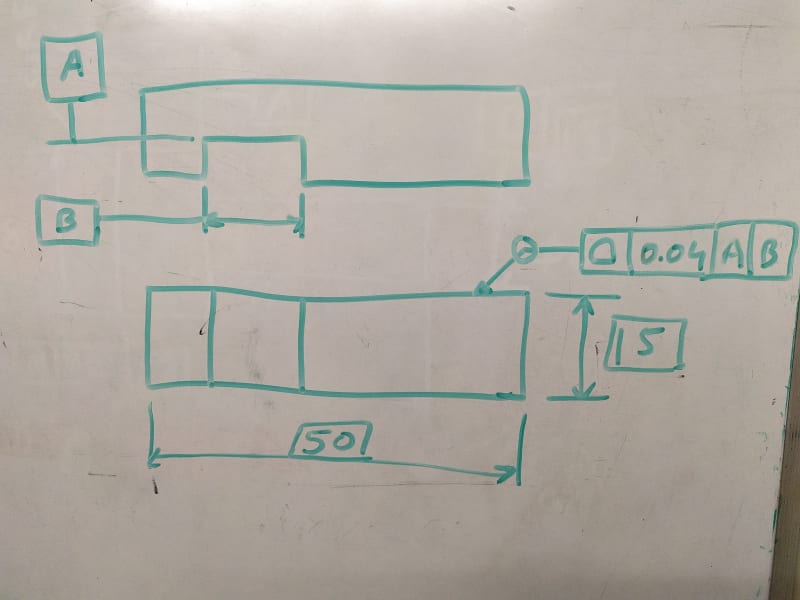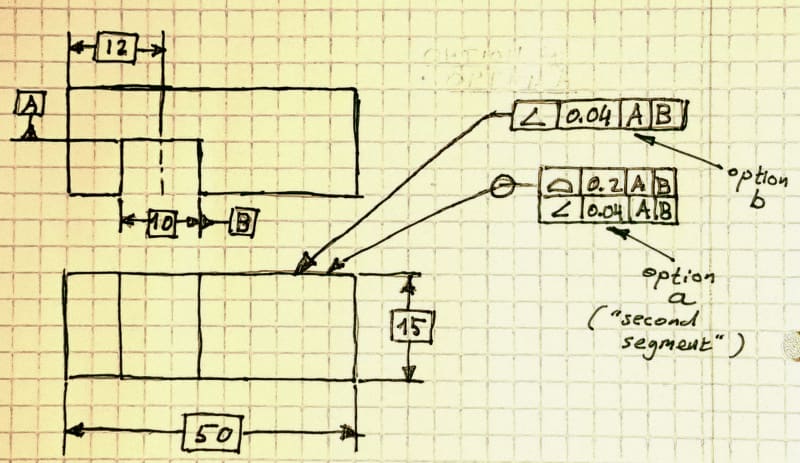Hi
Doubt 1:

Design requirements:
1) SURF A location from datum A shall be 0.2.
2) SURF A parallel to datum A and perp to datum B is 0.04.
Which of the below method is correct?
1) composite profile.
First segment: 0.2|A|B-max
Second segment: 0.04|A|B-max
2) Multiple segment.
First segment: profile of surface|0.2|A|B-max
Second segment: Angularity|0.04|A|B-max
----------------------------------------
Doubt 2:

Design requirements:
1) All surfaces location shall be 0.2.
2) All surfaces location orientation is 0.04.
Which of the below method is correct?
1) composite profile.
First segment: 0.2|A|B
Second segment: 0.04|A|B
2) Multiple segment.
First segment: profile of surface|0.2|A|B
Second segment: Angularity|0.04|A|B
Thank you.
Doubt 1:

Design requirements:
1) SURF A location from datum A shall be 0.2.
2) SURF A parallel to datum A and perp to datum B is 0.04.
Which of the below method is correct?
1) composite profile.
First segment: 0.2|A|B-max
Second segment: 0.04|A|B-max
2) Multiple segment.
First segment: profile of surface|0.2|A|B-max
Second segment: Angularity|0.04|A|B-max
----------------------------------------
Doubt 2:

Design requirements:
1) All surfaces location shall be 0.2.
2) All surfaces location orientation is 0.04.
Which of the below method is correct?
1) composite profile.
First segment: 0.2|A|B
Second segment: 0.04|A|B
2) Multiple segment.
First segment: profile of surface|0.2|A|B
Second segment: Angularity|0.04|A|B
Thank you.

